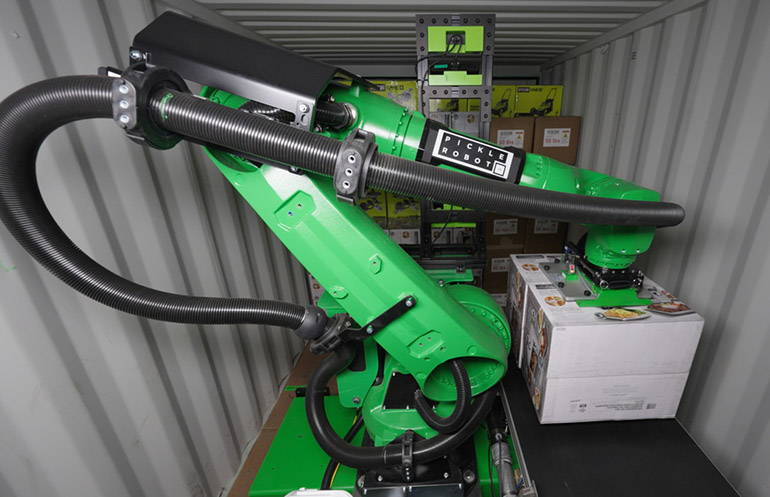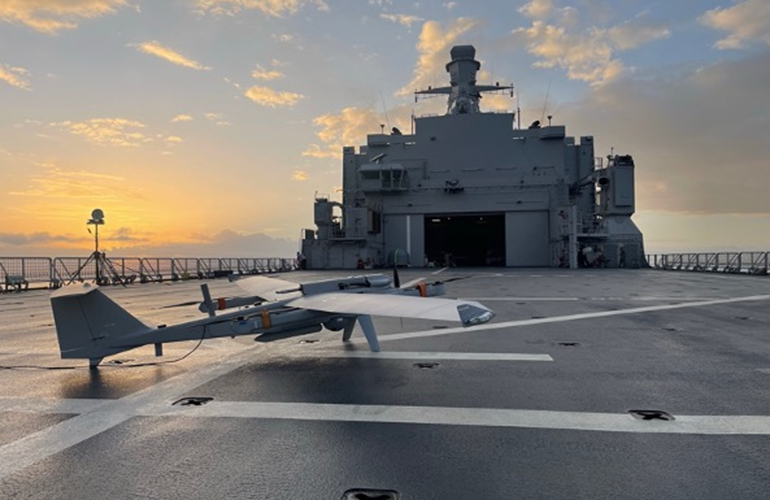
The Xtender is a micro tactical indoor ISR for multi-payload tasks in confined space scenarios. | Credit: XTEND
XTEND’s stated mission is to “Win the mission and get home safely.” The drone company has been heavily involved in supporting the Israeli Defense Forces, or IDF, during current Middle East conflicts.
Starting out as a gaming company, XTEND launched a league where “anyone could fly drones,” said Aviv Shapiro, co-founder and CEO. It developed first-person view (FPV) technology that was easy to use and with a short learning period.
The company then pivoted to enterprise use cases such as search and rescue, agriculture, and policing. At the beginning of the Gaza confict, XTEND redesigned its drone technology to meet the IDF’s specific and urgent reconnaissance needs.
Among the challenges that the company faced were GPS-denied environments, limited space and energy in tunnels, and the need for portability.
XTEND builds rugged autonomy
XTEND built technology that uses AI perception algorithms and an operator interface designed for ease of use. It enables the drones to identify open doors and windows in real time.
The company has innovated to overcome several obstacles to robust operations in the field, including a lack of GPS access and signal jamming. Indoors or underground, signal strength might be weak due to the interference of walls, buildings, or earth.
An operator can simply click on the remote screen, and the drone will autonomously navigate through the desired portal. The drone uses obstacle avoidance to avoid obstacles indoors and outdoors.
The primary use case for drones in the current conflict has been to provide cost-effective battlefield visibility to commanders while minimizing the risk to soldiers’ lives.

XTEND has developed autonomy for drones to detect and enter openings in walls. Source: XTEND
Robots, AI overcome environmental challenges
Underground tunnels restrict aerial drone operations, which have a battery life of only 15 to 20 minutes. XTEND put its XOS operating system and controls on quadruped robot dogs to enable reconnaissance.
The quadruped robots help overcome this limitation, allowing soldiers to extend their presence and capabilities in such environments, said the company. XOS enables the control of multiple machines simultaneously and augmented and virtual reality (AR/VR) over an artificial intelligence layer.
“We want to reduce the cognitive load on operators, allowing them to have situational awareness and perform their missions,” said Gal Nir, chief commercial officer at XTEND. “AI capabilities help the drone to detect and classify targets.”
“It’s the AI capabilities that you can integrate easily because of the open architecture of our software that allows the user to perform cutting-edge missions in very complex scenarios and do it very easily because most of the hard part is done by AI,” Nir told The Robot Report. “At the end of the day, the user is in the loop and makes the final decision to perform whatever action is necessary.”

XTEND has quickly pivoted from drone racing to defense and other applications. Source: XTEND
Quick training, development required
The IDF has had to call up reservists to serve in the field. These reservists may not have prior drone experience or a lot of time to learn how to operate them in the field.
“Getting qualified now takes hours rather than weeks,” said Nir. “With IDF feedback, we have closed-loop product development with soldiers both in the field and in the office,” he added. “We’ve been pushing out service packs every month and are up to Version 156.”
The U.S. government and allied nations are major customers, but XTEND is torn between building to specifications drawn up two to three years ago and keeping up with current defense needs, noted Shapiro.
“We need to build products that support tasks both underground and in mountainous forests,” he said. “Everything is evolving during the conflict itself. Cybersecurity is also a huge issue because we know that everything that falls on the ground will be taken to Iran or Russia.”

 1 month ago
22
1 month ago
22









 English (US) ·
English (US) ·